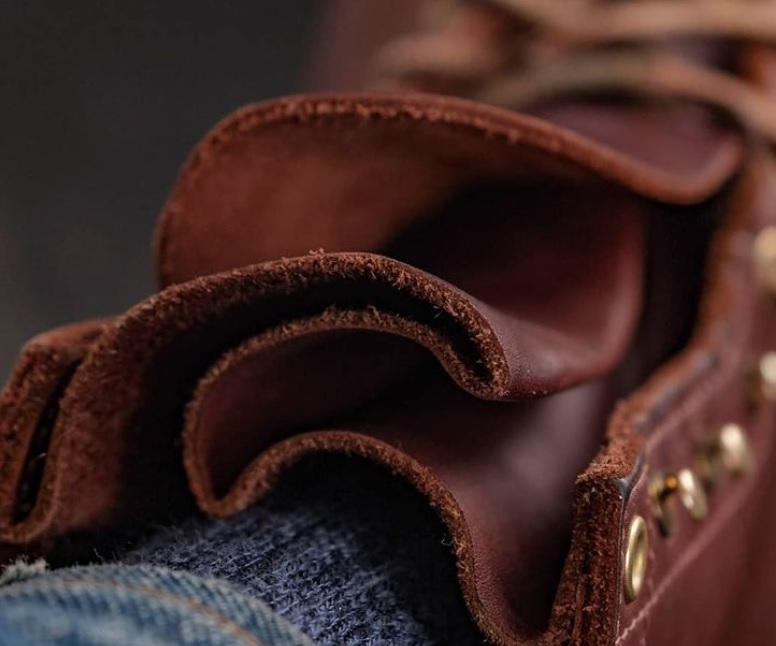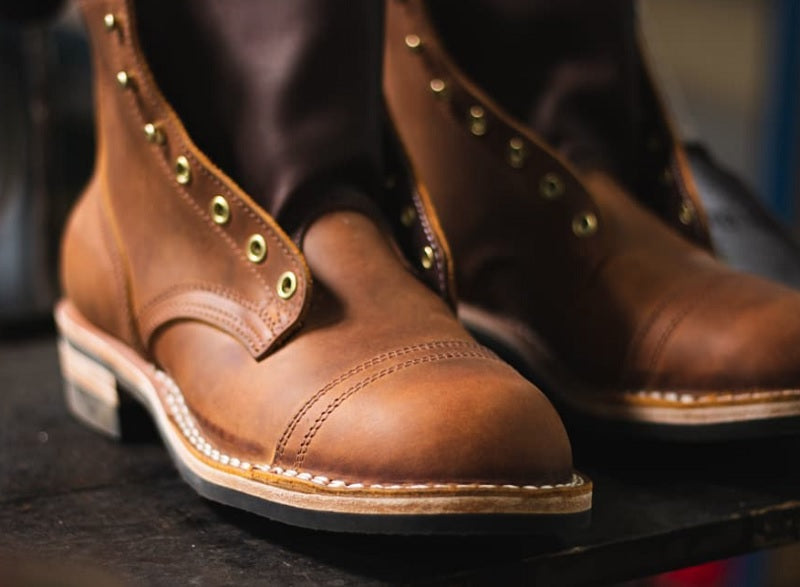er time, which many people find highly desirable in quality leather items.
These leathers are very well-suited to working applications, such as work boots, belts, gun holsters, and horse tack, but also work very well as dress boots and shoes given the smooth, even finish that quality leathers have.
Oil-Tanned Leather
Oil-tanned leather is something of a misnomer, as oil tanned leather isn't tanned by an oil as opposed to a chemical bath, but rather impregnated with certain oils as part of the tanning and dyeing process.
Oiling is actually part of the post-tanning process; it isn't actually part of tanning itself. However, this treatment of the leather does change the material to give it some qualities which some find desirable.
Impregnating the leather with oil gives it a bit more hydrating, essentially sealing the molecules of the hide with a layer of lipids (fats) and coating them.
This has the effect of partially waterproofing the leather (to a degree, more in a second!) as well as making it softer, more pliable.
The upshot is that you have leather that's easier to waterproof as well as being softer. This minimizes break-in time. A number of boot companies on the market use oil-tanned leather in making boots that are known for needing very little break-in before the boots are comfy.
The downsides?
Oil-tanned leather drinks up waterproofing such as neatsfoot oil and boot grease, requiring far more of it to stay waterproof than vegetable-tanned leather.
You'll notice the dye shears with pressure. Squeeze a bit of oil-tanned leather in your fingers and you'll notice it lightens as the oil particles run away from the pressure and that is how the patina will develop.
You also have to be very careful with boot treatment, as the leather will darken asymmetrically. If appearance is a priority, meaning they aren't work boots, this may be highly undesirable. Granted, if your boots are black it's not such a big deal, but definitely is if they aren't!
They take polish just fine, and can be shined up pretty well. However, the natural appearance is rather muted. With polishing, they can shine, but it will be more of a matte than glossy.
Oil-tanned leathers are fine for working applications, as it's common for some work boots or work gloves, though without the rigidity of vegetable tanned leather.
Chrome Tanned Leather
Chrome tanned leather is treated to a manmade chemical bath, particularly one rich in chromium sulfate. The solution has the same effect as vegetable tannins in terms of the effect in preservation, though the final product will differ.
The use of chrome tanning arose during the Industrial Revolution, and has largely supplanted vegetable tanning as the dominant method of producing leather given that synthetic compounds that can be made on an industrial scale are easier to procure in quantity than organic ones.
However, some tanneries are known to use a hybrid process, combining chrome and vegetable tanning in a two-stage process. This includes Chicago's Horween tannery, as this is the process that produces Chromexcel leather.
What is the upside of chrome-tanned leather?
The upside is that chrome-tanned leathers tend to be more pliable and softer than vegetable-tanned leather, making them softer and reducing the break-in period. For those wanting to, chrome-tanned leather also takes a high-mirror shine like nobody's business.
However, just as with oil-tanned leather, you have to be careful when it comes to treating it for preservation as asymmetrical darkening can occur when applying grease or oil. Chrome tanned leather responds very well to dubbin, a wax-based leather preservative compound.
Chrome-tanned leather also tends to maintain a more uniform appearance over time, without developing the patina that vegetable tanned leather is known for.
It's more supple than vegetable tanned leather, but also doesn't have the same stiffness, making it a little less suited to working applications requiring the utmost of support. It's great for light duty, but not necessarily for hard-working professions.
What Is The Best Leather For Work Boots?

Ultimately, it's not so much that any one is better than any other, it's more that leather made with each of these tannings methods have certain attributes that leather made with other tanning methods may not.
Quality leather is quality leather, and a great pair of boots will always be a great pair of boots.





































